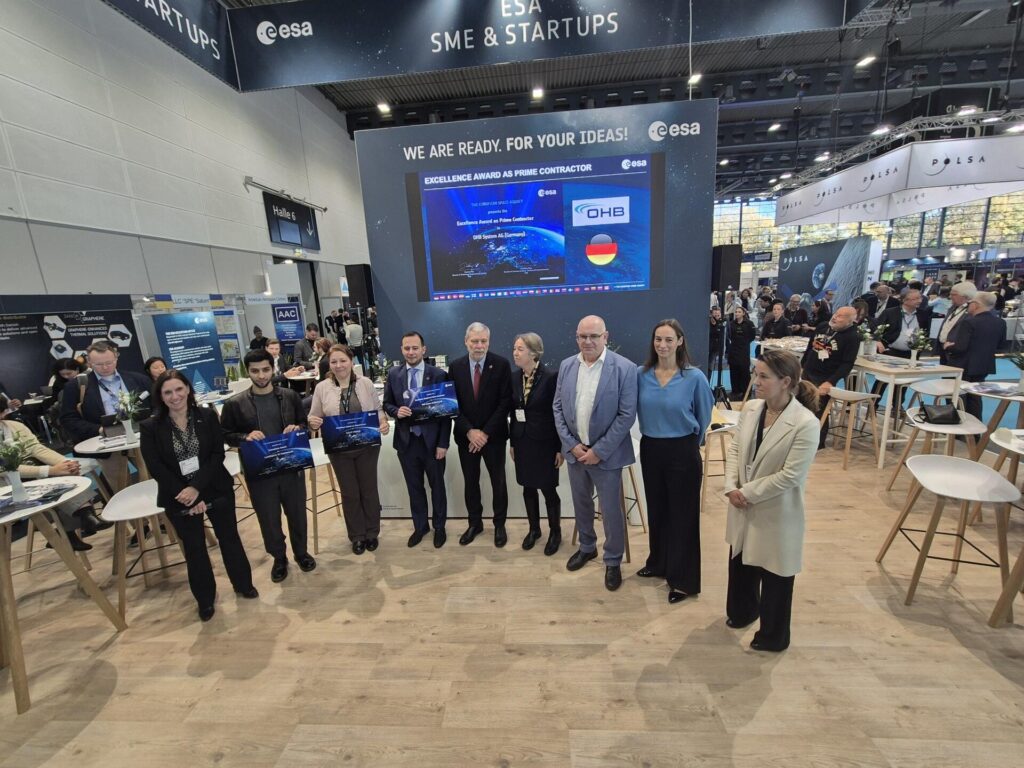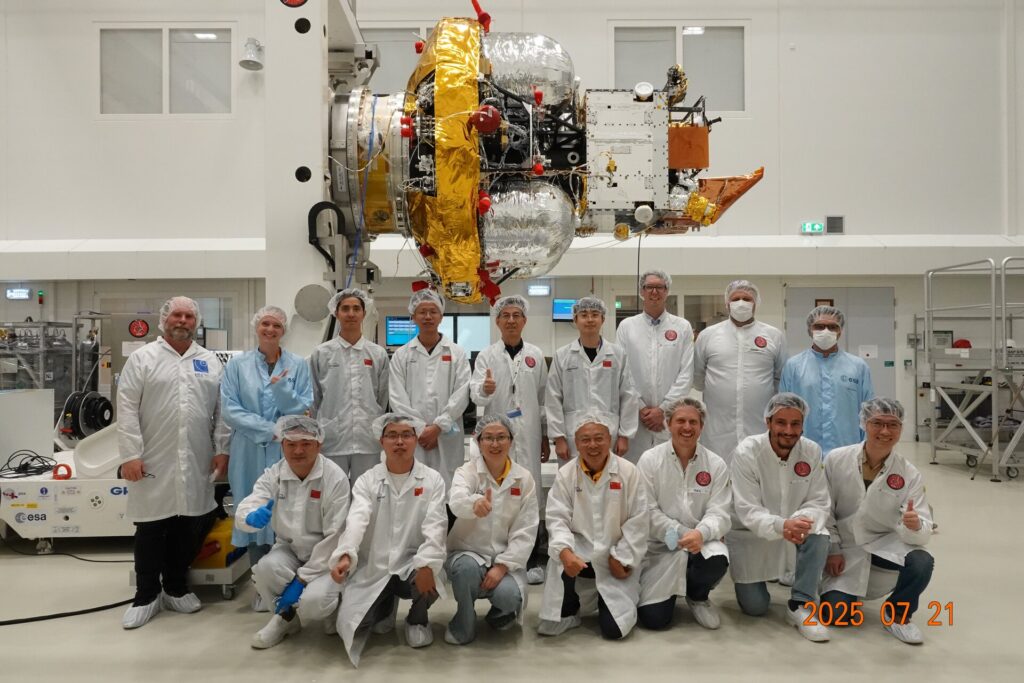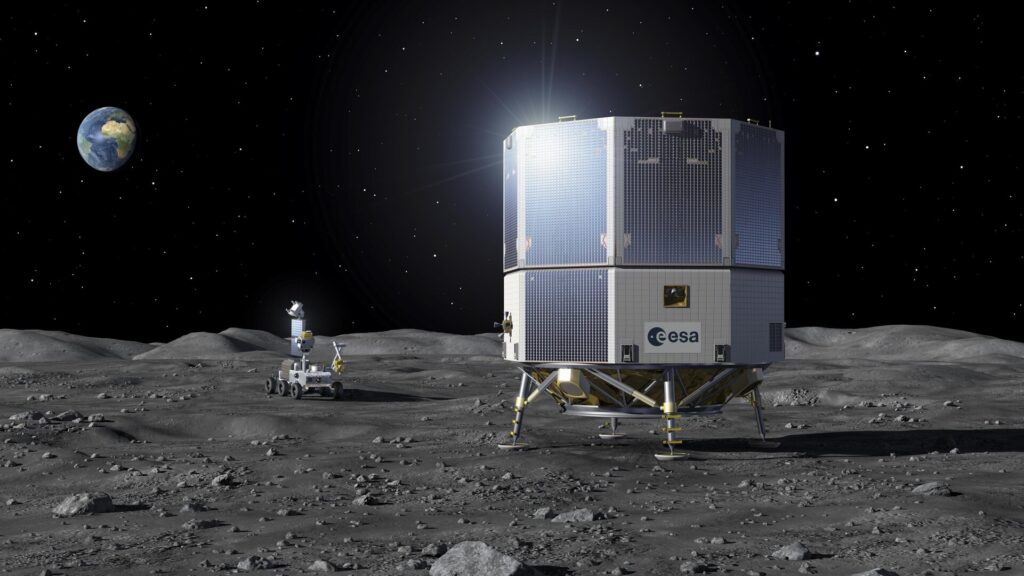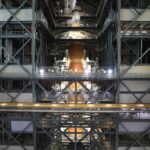Now Reading: ESA’s first stand-alone deep-space CubeSat Henon takes shape
-
01
ESA’s first stand-alone deep-space CubeSat Henon takes shape
ESA’s first stand-alone deep-space CubeSat Henon takes shape
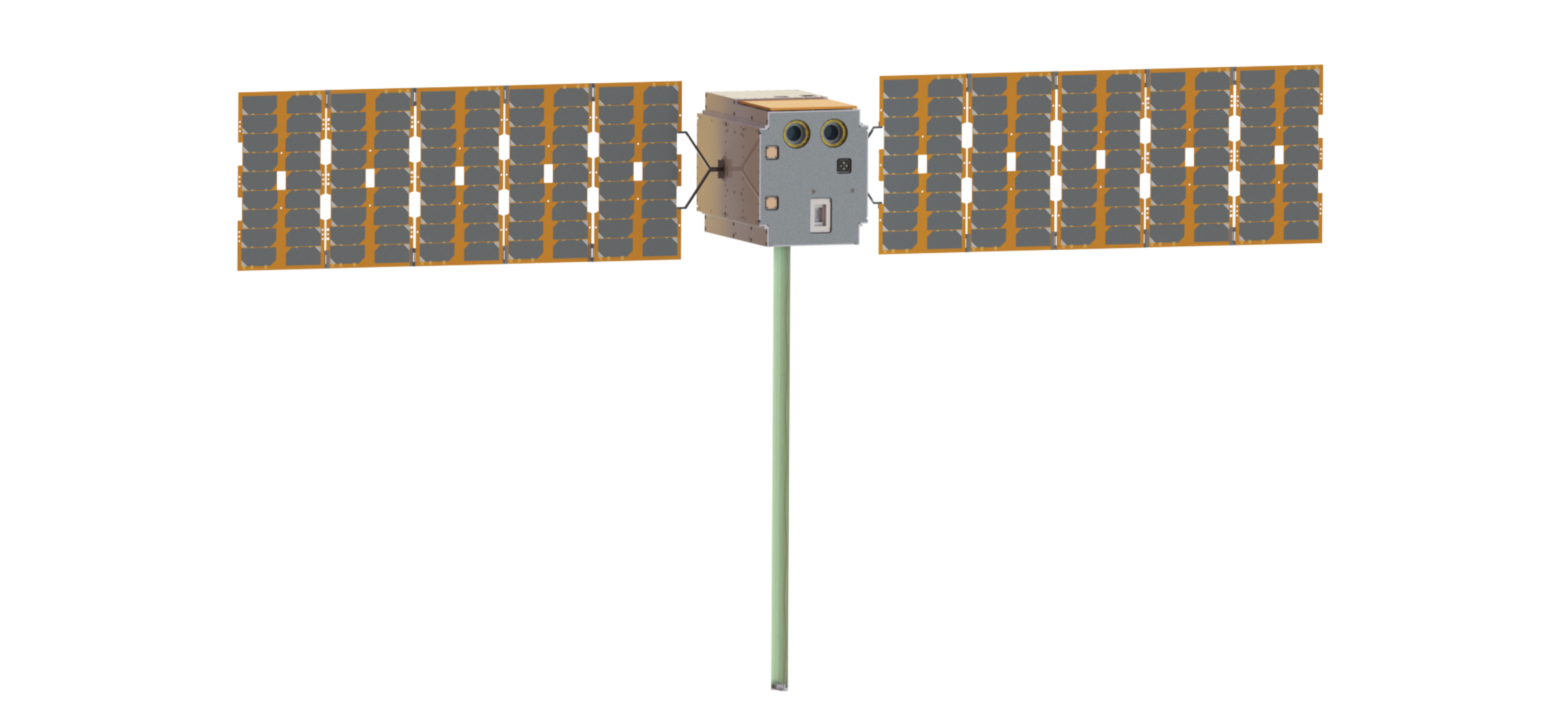

29/10/2025
352 views
8 likes
The European Space Agency’s upcoming Henon mission will be the first ever CubeSat to independently venture into deep space, communicate with Earth and manoeuvre to its final destination without relying on a bigger spacecraft. Once in its orbit around the Sun, the carry-on luggage-sized CubeSat will observe the Sun’s emissions to demonstrate technologies capable of providing advanced warnings of solar storms hours before they reach Earth.
Henon’s firsts
ESA’s Heliospheric Pioneer for Solar and Interplanetary Threats Defence, Henon for short, is set to be the first ever stand-alone CubeSat to perform significant manoeuvres on the way to its far-away destination – an orbit that will take the spacecraft up to 24 million km from Earth, far beyond the 2 million km boundary of where deep space is said to begin.
While Henon will not be ESA’s first CubeSat to fly so far from Earth – Hera mission’s Juventas and Milani will claim that title – it will be the first to fly alone, without a parent spacecraft.
Roger Walker, ESA’s Technology CubeSats manager, explains: “Juventas and Milani will communicate with the larger Hera spacecraft via radio-based inter-satellite links, leaving Hera to transmit their findings back to Earth. Henon, on the other hand, will be able to independently communicate with ground stations through ESA’s Estrack network, thanks to a new miniaturised deep-space transponder currently under development.”
There is another reason for the word ‘pioneer’ in Henon’s name. To be able to execute the manoeuvres that will position it in its orbit, the spacecraft will be sporting a tailor-made electric propulsion system.
This first-of-its-kind miniature ion engine, powered by electricity generated from Henon’s solar panels, will use charged xenon gas atoms to propel the spacecraft forward, allowing for an unprecedented manoeuvre capability for such a miniaturised spacecraft.
“This new propulsion system, once demonstrated, will open up opportunities for future low-cost missions to the Moon, asteroids, and even in Mars orbit,” adds Roger.
Henon’s design completed
In March this year, Henon’s prime contractor Argotec kicked-off the mission’s final implementation phase. Argotec’s mission engineers have since designed a detailed model of the spacecraft, which has recently passed an important milestone in the mission development process, the Critical Design Review.
Davide Monferrini, Henon Program Manager at Argotec, comments: “This milestone is the result of remarkable teamwork, collaborative spirit, and professionalism from all members of the consortium. It showcases our collective commitment to achieving technical and programmatic excellence while validating a truly innovative configuration featuring three payloads and multiple miniaturized subsystems, including our Curie Power Suite, the advanced Power Conditioning and Distribution Unit (PCDU) that will serve as Henon’s ‘electric heart’. Together, we remain committed to maintaining this high standard of excellence as we move forward.”
With the mission’s detailed design finalised and confirmed, the team will now move on to the next step – using a FlatSat, a prototype of the Henon spacecraft with all the electronic components interlinked and laid out on a table, they will easily access and test both the spacecraft’s software and hardware.
At the same time, they will build a specialised model of the spacecraft and subject it to rigorous testing to make sure Henon’s structure can withstand the vibrations of launch, as well as the vacuum, radiation, and extreme temperature conditions of deep space.
A very special orbit
Henon is expected to piggyback on the launch of a larger spacecraft planned for late 2026. The launcher will take the CubeSat to the Sun-Earth Lagrange point 2, some 1.5 million km beyond Earth in the direction away from the Sun.
From here, the CubeSat will use its new electric propulsion system to fly to a Distant Retrograde Orbit (DRO) around the Sun – an orbit similar to but more elliptical than that of the Earth, first invented by French astronomer Michel Hénon in 1969.
The mission – Hénon’s namesake – will be the first ever spacecraft to fly in this type of orbit, which will take it 12 million km from Earth at its closest point, and 24 million km away at the farthest. As both Earth and Henon will be orbiting the Sun, their relative orbits will make for an interesting situation – Henon will appear as if it’s orbiting Earth in the shape of an ellipse instead.
Advanced solar storms forecast
The Henon mission is being developed with funding from ESA’s General Support Technology Programme (GSTP), which enables ESA to pioneer new technologies through In-Orbit Demonstration experiments.
As is the case with the majority of ESA’s innovative technology demonstration missions, Henon’s purpose will be two-fold: pushing the boundaries of space technology while ensuring it serves real-life applications.
Roger clarifies: “The mission will leverage its unique proximity to the Sun on the sunward side of the DRO to demonstrate miniaturised-instrument technologies that can confirm the impending arrival of solar storms well before they reach Earth, providing a warning up to 3-6 hours in advance. This is a considerable improvement compared to the current warning time provided by spacecraft located at Sun-Earth Lagrange point 1, which is about 15 to 60 minutes.”
Juha-Pekka Luntama, Head of ESA’s Space Weather Office, concludes: “Demonstrating this warning capability with Henon will open up a new pathway to develop a future constellation of small spacecraft that would operate in the DRO and keep a close watch on the progress of solar storms. This constellation would provide a continuous warning service for operators of critical infrastructure, like electrical power grids, on ground, giving us ten times more time to implement mitigation measures to prevent damage.”
Stay Informed With the Latest & Most Important News
Previous Post
Next Post
-
 012024 in Review: Highlights from NASA in Silicon Valley
012024 in Review: Highlights from NASA in Silicon Valley -
 02Panasonic Leica Summilux DG 15mm f/1.7 ASPH review
02Panasonic Leica Summilux DG 15mm f/1.7 ASPH review -
 03How New NASA, India Earth Satellite NISAR Will See Earth
03How New NASA, India Earth Satellite NISAR Will See Earth -
 04And Thus Begins A New Year For Life On Earth
04And Thus Begins A New Year For Life On Earth -
 05Astronomy Activation Ambassadors: A New Era
05Astronomy Activation Ambassadors: A New Era -
06SpaceX launch surge helps set new global launch record in 2024
-
 07Space Force plans new ‘Futures Command’ amid pressure to speed up modernization
07Space Force plans new ‘Futures Command’ amid pressure to speed up modernization












